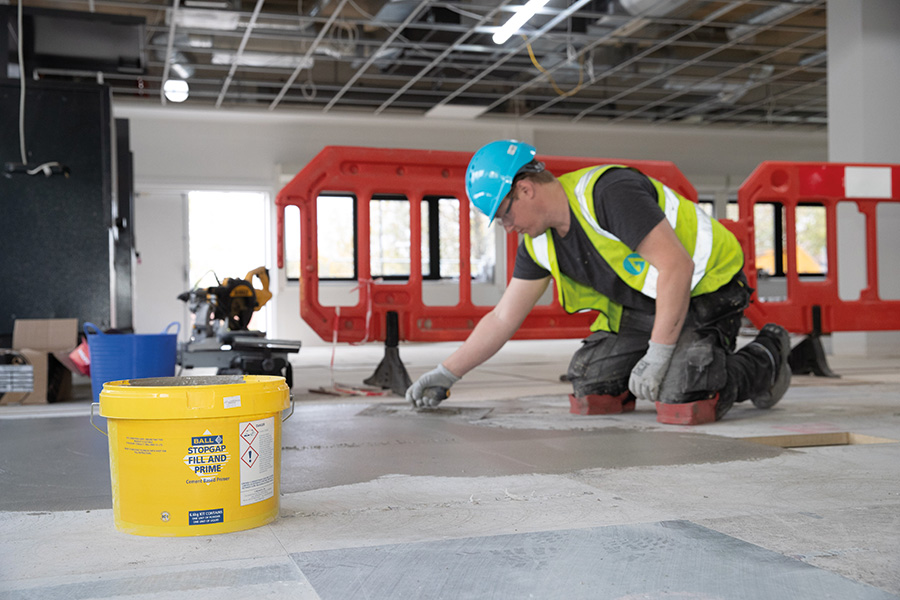RAISED access flooring is often found in commercial environments and is a useful option in a wide variety of settings. However, installing floorcoverings over this kind of subfloor requires contractors to follow particular procedures to ensure the long-term performance of the installation.
Consisting of horizontal panels, typically made of metal or cementitious material, supported by adjustable ‘legs’, raised access flooring provides an elevated structural floor above a solid substrate, such as concrete, allowing space beneath for electrical wiring and other services found in modern commercial environments.
Installing floorcoverings over raised access panels presents a few specific considerations, including the need to fill joints between panels before installing floorcoverings, remembering to prime the subfloor beforehand, and to select a flexible smoothing compound to accommodate movement in the substrate. Before beginning, contractors should also check the height of the elevated floor is consistent, ensuring no safety hazards and a level base for the application of subfloor preparation products.
Filling the gaps
When installed, raised access panels have small joints between them. If a smoothing compound is applied directly over the top of raised access panels, these gaps may result in weak points, which can cause the smoothing compound to crack and lose its integrity. Therefore, the gaps must be filled before a smoothing compound is applied and floorcoverings are installed to ensure the performance of the installation throughout its lifetime.
Priming is also important when working over raised access panels. When used over non-absorbent subfloors, such as metal panels, priming serves to promote the application characteristics of subsequently applied smoothing compounds. When used over absorbent subfloors, such as panels made of cementitious materials, priming also serves to promote adhesion, as well as stopping the unacceptably rapid drying of smoothing compounds.
Two in one
Recently developed cement-based primers, such as F Ball’s Stopgap Fill and Prime, are available that are designed specifically for use over raised access panels, which fill the gaps at the joints between the panels while priming the subfloor, saving valuable time. These cement-based primers have a thixotropic consistency, meaning they flow freely when stirred but set to a gel-like consistency on standing.
This, says the company, enables the joints to be filled to minimise movement of the substrate. These primers are also suitable for use over raised access panels and substrates with well-bonded, waterproof adhesive residues prior to the application of a smoothing compound.
Once the primer has cured, a smoothing compound should then be applied to create a smooth base for the receipt of new floorcoverings.
‘In these situations, contractors should select a flexible smoothing compound, such as F Ball’s Stopgap 700. These flexible smoothing compounds contain tiny fibres that maintain the product’s integrity when subject to natural movement within the subfloor, preventing cracks and rendering small movements in flexible subfloors harmless.’
Final steps
‘Carpet tiles are a common choice for installation over raised access panels because, when installed using purpose-designed carpet tile tackifier, such as F Ball’s Styccobond F41, they dry to a permanently tacky film, allowing them to be removed easily should they need to be taken up to access the area beneath the panels.
‘It’s always advisable to check the compatibility of particular floorcoverings and adhesives. For this purpose, F Ball produces its industry-leading recommended adhesives guide (RAG), which lists adhesives recommended for use with over 6,000 floorcoverings produced by over 200 manufacturers. It’s available as a free app or a printed booklet, and an interactive version can also be found on the F Ball website. Alternatively, F Ball’s
technical service department are on hand Monday to Friday, 8.30am-5.00pm, to answer your questions about F Ball products and how to use them.’
www.f-ball.co.uk


